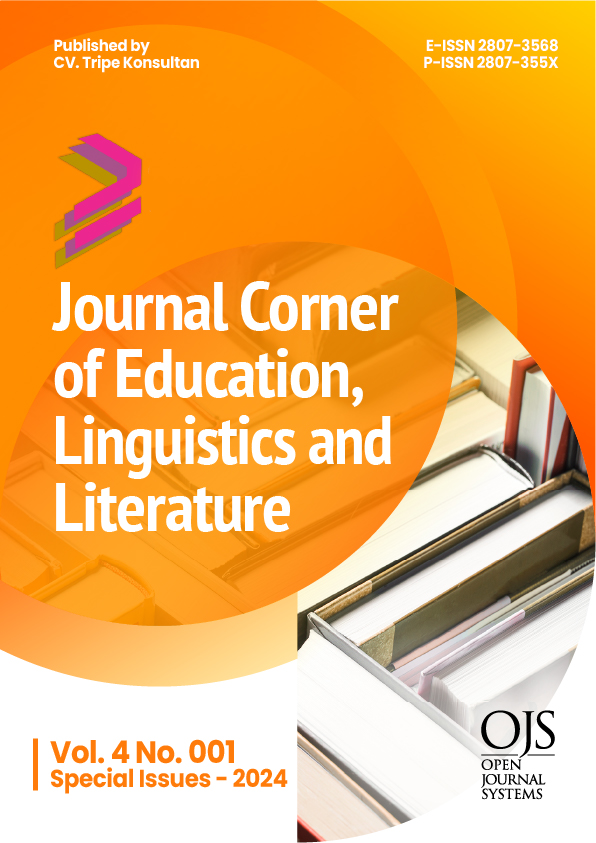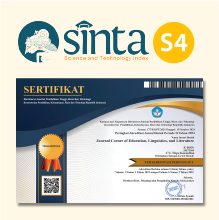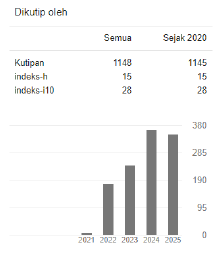Local Government Policy on Handling Stunting in Mandailing Natal Regency
 https://doi.org/10.54012/jcell.v4i001.403
https://doi.org/10.54012/jcell.v4i001.403
 Abstract views: 147
Abstract views: 147
 PDF downloads: 136
PDF downloads: 136
Keywords:
Policy, Stunting Management, Challenges, Mandailing Natal RegencyAbstract
Stunting is an issue that requires serious attention from the Central Government to the Regional Governments, particularly the Regional Government of Mandailing Natal Regency. This is because Mandailing Natal Regency is one of the regions in North Sumatra with a high stunting rate, reaching 47.7% in 2021, placing Mandailing Natal at the top rank in North Sumatra for stunting cases, according to the Indonesian Nutrition Status Study (SSGI). In 2022, Mandailing Natal dropped to third place with a stunting rate of 34.2%. However, this figure is still far from the national target set for Mandailing Natal, which is 14% by 2024. This study aims to analyze the policies of the Mandailing Natal Regional Government to reduce the stunting rate to 14% by 2024 and examine the various challenges faced. The method used in this research is qualitative descriptive analysis. Data collection techniques include interviews, observation, and documentation. The informants for this study included officials from the Mandailing Natal Health Office, Family Planning Office, village heads, and village assistants. The study found that the Mandailing Natal Government has implemented cross-sectoral policies, specific interventions, and the "Foster Father" program to reduce stunting. Success depends on policy continuity, program optimization, and increasing public awareness. The main challenges are limited funding, poor sanitation, and cultural barriers.
Downloads
References
Amin, Nur Afia, and Madarina Julia. 2016. “Sociodemographic Factors and Parental Height and Their Relationship with Stunting Incidence in Toddlers Aged 6-23 Months.” Indonesian Journal of Nutrition and Dietetics 2(3): 170. doi:10.21927/ijnd.2014.2(3).170-177.
Anwar, Saiful, Eko Winarti, and Sunardi Sunardi. 2022. “Systematic Review of Risk Factors, Causes and Impacts of Stunting in Children.” Journal of Health Sciences 11(1): 88. doi:10.32831/jik.v11i1.445.
Astuti, Dyah Dwi, Rita Benya Adriani, and Tri Widyastuti Handayani. 2020. “Community Empowerment in the Framework of Stopping the Stunting Generation.” JMM (Jurnal Masyarakat Mandiri) 4(2): 156–62. http://journal.umat.ac.id/index.php/jmm.
Blake, Rachel A., Sangshin Park, Palmera Baltazar, Edna B. Ayaso, Donna Bella S. Monterde, Luz P. Acosta, Remigio M. Olveda, Veronica Tallo, and Jennifer F. Friedman. 2016. “LBW and SGA Impact Longitudinal Growth and Nutritional Status of Filipino Infants.” PLOS ONE 11(7): 1–13. doi:10.1371/journal.pone.0159461.
Choliq, Idham, Dede Nasrullah, and Mundakir Mundakir. 2020. “Prevention of Stunting in Medokan Semampir Surabaya Through Modification of Food for Children.” Humanism: Journal of Community Service 1(1): 31–40. doi:10.30651/hm.v1i1.4544.
Desrinelti, Desrinelti, Maghfirah Afifah, and Nurhizrah Gistituati. 2021. “Public Policy: Implementation Concept.” JRTI (Journal of Indonesian Action Research) 6(1): 83. doi:10.29210/3003906000.
Ernawati, Aeda. 2020. “Description of Causes of Toddler Stunting in Stunting Locus Village, Pati Regency.” Jurnal Litbang: Media Information for Research, Development and Science and Technology 16(2): 77–94. doi:10.33658/jl.v16i2.194.
Giyaningtyas, Ika Juita, Achir Yani S. Hamid, and Novy HC Daulima. 2019. "Holistic Response of Mother as Caregiver in Treating Stunting Children." Pakistan Journal of Medical and Health Sciences 13(3): 928–32.
Gustina, Gustina. 2021. “Health Education on the Role of Mothers in Early Detection of Stunting in the Work Area of Simpang Kawat Health Center, Jambi City.” Journal of Community Service in Health (JAK) 3(1): 47. doi:10.36565/jak.v3i1.149.
Kartini, Apoina. 2016. “Incidence of Stunting and Bone Age Maturity in Elementary School Children in Agricultural Areas of Brebes Regency.” Journal of Public Health 11(2): 214. doi:10.15294/kemas.v11i2.4271.
Kusumawati, Erna, Setiyowati Rahardjo, and Hesti Permata Sari. 2015. “Model of Controlling Risk Factors for Stunting in Children Under Three Years.” Kesmas: National Public Health Journal 9(3): 249. doi:10.21109/kesmas.v9i3.572.
Maulana, Ilham Nur Hanifan, Qomariyatus Sholihah, and Wike Wike. 2022. “Implementation of Specific Nutrition Intervention Policy as an Effort to Handle Stunting in Malang Regency.” Scientific Journal of Public Administration 8(2): 136–44. doi:10.21776/ub.jiap.2022.008.02.1.
Noviaming, Sisilia, Afrona EL Takaeb, and Helga JN Ndun. 2022. “Perception of Toddler Mothers About Stunting in the Tarus Health Center Area, Kupang Regency.” Public Health Media 4(1): 44–54. https://doi.org/10.35508/mkmhttps://ejurnal.undana.ac.id/MKM.
Primasari, Yefta, and Budi Anna Keliat. 2020. “Parenting Practices as an Effort to Prevent the Impact of Stunting on Children’s Psychosocial Development.” Journal of Nursing Science 3(3): 263–72.
“Village Government Policy on Stunting Prevention in Pagaran Gala-Gala Village, South Panyabungan District.” 7: 532–37.
Ramdhani, Awa, Hani Handayani, and Asep Setiawan. 2020. “The Relationship Between Mother's Knowledge and the Incidence of Stunting.” National Seminar of Lppm ISBN: 978-: 28–35.
Regita, Fina Aura, and Ananta Prathama. 2023. “The Role of Village Government in Preventing and Reducing Stunting.” Journal of Administrative and Social Sciences 12(1): 121–28.
Rehena, Zasendy, Monike Hukubun, and Andriana Ritje Nendissa. 2021. “The Effect of Nutrition Education on Mothers' Knowledge of Stunting in Kamal Village, West Seram Regency.” Moluccas Health Journal 2(2): 62–69. doi:10.54639/mhj.v2i2.523.
Sirajuddin, Ilham Arief. 2016. “Implementation of Regional Government Policy in Basic Public Services in the Social Sector in Makassar City.” Scientific Journal of Public Administration 4(1): 1. doi:10.26858/jiap.v4i1.1817.
Sulistyaningsih, Dwi Arum, Binar Panunggal, and Etisa Adi Murbawani. 2018. “Urine Iodine Status and Iodine Intake in Stunting Children Aged 12-24 Months.” Indonesian Micro Nutrition Media 9(2): 73–82. doi:10.22435/mgmi.v9i2.1028.
Tampubolon, Dahlan. 2010. “Intervention Policy.” Journal of Public Policy 11(1): 25–32.
Muhammadiyah University of Yogyakarta. Accounting Study Program., Isma, and Association of Accounting Study Programs of Muhammadiyah Universities. 2016. “Journal of Accounting and Investment.” Journal of Accounting and Investment 12(2): 110–25. http://journal.umy.ac.id/index.php/ai/article/view/678.
Wardana, Ari Kusuma, and Indah Wuri Astuti. 2020. “Counseling on Stunting Prevention in Children.” Journal of Independent Empowerment 1(2): 170–76. doi:10.31316/jbm.v1i2.642.
Downloads
Published
How to Cite
Issue
Section
License
Copyright (c) 2024 Irman Puansya, Darman Syah Pulungan, Rahmat HarisSaputra Harahap, Anita Telaumbanua

This work is licensed under a Creative Commons Attribution-ShareAlike 4.0 International License.
All articles published in the Journal Corner of Education, Linguistics, and Literature are licensed under the Creative Commons Attribution-ShareAlike License (CC BY-SA).

















